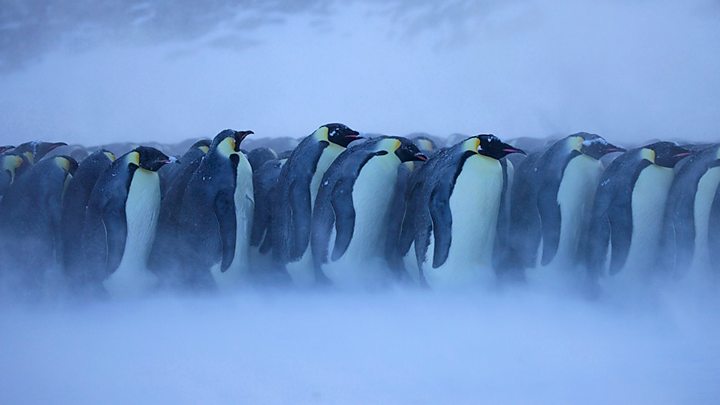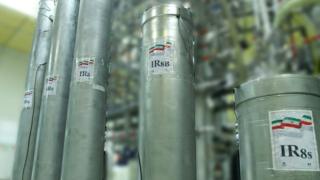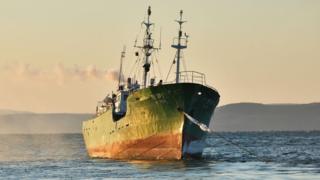
Media playback is unsupported on your device
Antarctica’s Emperor penguins could be in real difficulty come 2100 if the climate warms as expected.
Experts say the birds raise their young on sea-ice and if this platform is greatly curtailed, as the models project, then it’s likely to put the animals’ numbers into steep decline.
One forecast is for the population to be halved by the end of the century.
Researchers are calling for the conservation status of Emperors to be upgraded.
At the moment, they are classified as “Near Threatened” by the International Union for Conservation of Nature (IUCN), the organisation that keeps the lists of Earth’s endangered animals.
A proposal will be submitted shortly to lift Emperors into the more urgent “Vulnerable” category.
“These are very resilient birds; they experience really tough winters and keep coming back year after year to their breeding sites to raise their chicks,” explained Dr Michelle LaRue, who’s co-authored a new report on the penguins’ situation in the journal Biological Conservation.
“Emperors are fighters, but our concern is how long their resilience will continue into the future,” the University of Canterbury, New Zealand, researcher told BBC News.
The penguins’ breeding success is critically dependent upon so-called “fast ice”. This is the sea-ice that sticks to the edge of the continent or to icebergs.
It’s low and flat, and an ideal surface on which to lay an egg, incubate it and then raise the subsequent chick in its first year of life.
But this seasonal ice needs to be long-lived, to stay intact for at least eight or nine months.
If it forms too late or breaks up too early, the young birds will be forced into the sea before they’re ready, before they’ve lost their down and grown water-proof feathers.
Likewise the adults. They undergo a dramatic moult in the summer months of January and February. They too risk drowning if the fast ice melts away and they don’t have the right plumage to resume swimming.
Antarctic sea-ice trends in recent decades have been pretty stable, albeit with some big regional shifts. But the climate models foresee significant losses this century even if global warming can be kept within the Paris Agreement “guardrail” of no more than 2C above pre-industrial times.
Such a temperature rise (and it would be amplified at the poles) would put more northerly Emperor breeding sites out of action, pushing the birds poleward.
The assessment is that Emperor numbers – currently at 250,000 breeding pairs – could be cut by 50% or more under such a scenario.
Image copyright
SPL
Emperor penguins need a reliable and stable platform of sea-ice
Dr Phil Trathan, who is the lead author on the new paper, says only sharp reductions in greenhouse gas emissions are likely to alter this future. But he calls for efforts to limit the pressure on the birds in other ways in the meantime.
“There are a number of different tools that we can use. Marine Protected Areas (MPAs) would enable us to regulate fishing and other human activities in the areas that Emperors use, whether close to their breeding sites or to their foraging sites,” the head of conservation biology at the British Antarctic Survey (BAS) said.
“We could also designate the Emperor penguin as an Antarctic Specially Protected Species. That would allow us to bring in an action plan to help manage impacts that might threaten them even outside MPAs.”
UK and American scientists are currently engaged in a 10-year analysis of Emperor numbers. The project, funded by green campaign group WWF, will provide the updated population baseline that the IUCN can then use in its review of the penguins’ status next year.
Dr Peter Fretwell is a remote sensing specialist at BAS and has helped pioneer the satellite techniques for counting penguins from space.
He told BBC News: “Everything we know – all the experts, all the models – tells us that Emperors are going to be in real trouble. We need to pull out all the stops to help them. That’s going to be hard because we know the one thing that’s really going to save them is stabilisation of the global climate.”
Image copyright
DigitalGlobe, a Maxar company
Some colonies are counted on the ice; others are assessed from space
Jonathan.Amos-INTERNET@bbc.co.uk and follow me on Twitter: @BBCAmos












